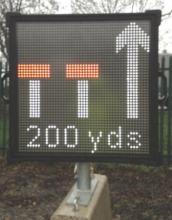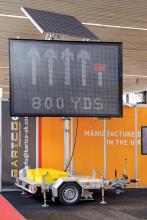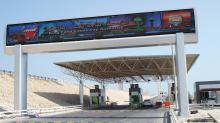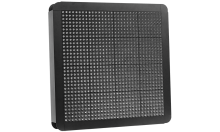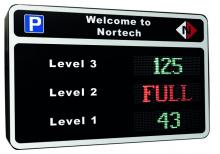VMS innovations offer transportation efficiency gains – David Arminas writes. Baggage truck drivers at the new Hamad International Airport in Doha, Qatar, are now getting real-time imformation and directions on variable message signage. The airport opened last April and will be the first touchdown point for fans attending the football World Cup in Qatar in 2022. The airport is only 4km away from the overused but now redundant Doha International Airport, which will be demolished and redeveloped as an urban p
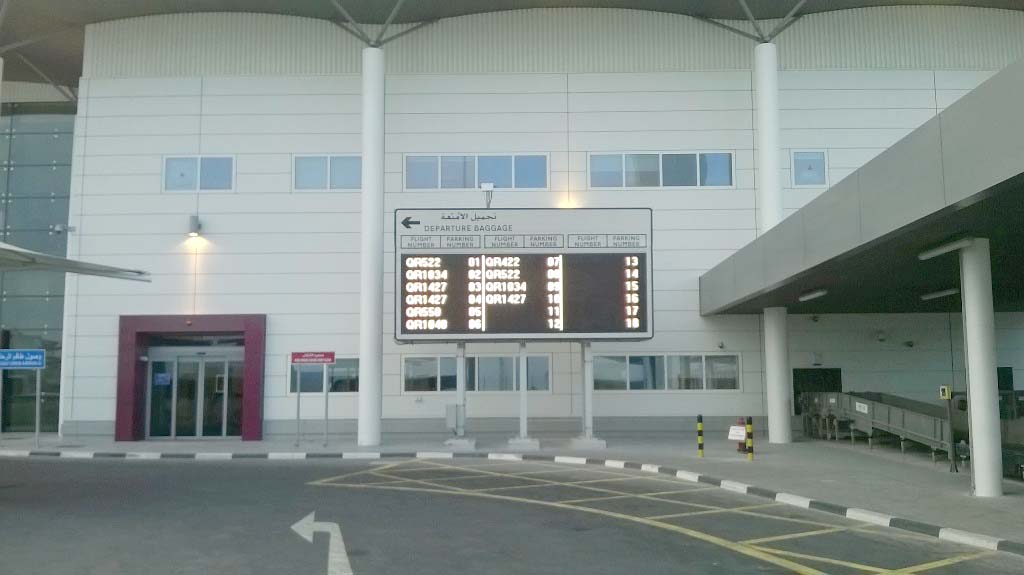
Solari signs installed on internal airport roads at Hamid International
VMS innovations offer transportation efficiency gains – David Arminas writes
Baggage truck drivers at the new Hamad International Airport in Doha, Qatar, are now getting real-time imformation and directions on variable message signage.
The airport opened last April and will be the first touchdown point for fans attending the football World Cup in Qatar in 2022. The airport is only 4km away from the overused but now redundant Doha International Airport, which will be demolished and redeveloped as an urban project called Al Sahan City.
At Hamid Inernational, Italian VMS supplier Solari di Udine, based in Udine in north-east Italy, installed its equipment inside the airport’s roads and in the parking areas used by the baggage trucks. The signage offers real-time information to baggage truck drivers concerning flight times and relevant parking bays for the loading and unloading of baggage.
Equipment from4801 Solari included three large VMS full colour and full graphic (304x96 pixels dot pitch 20mm, around 6x2m and 38 small VMS RGB, 16x32 pixels dot pitch 12mm) all working with NTCIP protocol.
As with many installations in the Middle East, there are some particular environmental challenges, in particular temperatures that can soar to 85°C on the metal surface, not to mention strong winds, dust and even moisture. The equipment needs to be effectiveliy sealed and also have optical performance for at least a decade. Testing of equipment is essential.
Testing of VMS equipment is no less important globally and the department of transport for the south-east US state of Florida (FDOT) recently added another Daktronics signage unit to its TERL-approved product list.
The FDOT Traffic Engineering Research Laboratory is a joint effort between Florida’s DoT and Florida State University. Since 1997, the lab, based in Talahassee, has been initiating and coordinating the development of standards, testing and evaluation capabilities, as well as training for traffic control equipment and related devices. As part of this work, TERL develops and maintains the FDOT Approved Product List of Traffic Control Signal Devices.
Daktronics, based in Brookings in the US state of South Dakota, is a manufacturer of large-format LED video displays, message displays, scoreboards, digital billboards and control systems for sport, business and transportation applications. TERL recently approved the Daktronics VM-1020 Series LED display, single-line 20mm HRFC (high-resolution, full colour) dynamic message sign.
The VM-1020 features variable character and background colours, such as black letters or numbers on a white background. The sign’s HRFC capabilities allow agencies to match the display’s background colour to the static signage according to Manual of Uniform Traffic Control Displays (MUTCD) standards.
Because the standard character heights are 30.5cm or 46cm (12” or 18”), the displays also aid in applications requiring notification for high occupancy tolling as well as travel time and advisory messages. The majority of the electronic equipment is housed in a roadside cabinet for easy maintenance.
“To-date, TERL has approved six series of197 Daktronics dynamic message sign displays and traffic cabinets,” said Mike Weinberg, Daktronics transportation product manager. “We’re pleased to add another choice to our transportation product offering with the addition of a full colour embedded dynamic message sign.”
Also in the US, solar dynamic message sign maker8027 SES America (SESA) recently expanded with the opening of a manufacturing facility in Warwick, in the state of Rhode Island, near New York City. The site triples the company’s work space and SESA also expanded several departments, including research and development, operational personnel and manufacturing staff.
The expansion comes after SEAS’s recent contract worth $3.2 million for signage with the nearby state of Massachusetts.
SESA’s French-born president Philippe Perut has said the company is working on “prototype” VMS that is connected to the cloud. He said that the prototype can receive information from the cloud through a wireless connection. This allows data providers, such as1224 Google, 3972 TomTom and Garmin to send travel time or other information like local weather or road conditions to the sign. Data could also be displayed warning drivers of upcoming congestion or crashes.
Baggage truck drivers at the new Hamad International Airport in Doha, Qatar, are now getting real-time imformation and directions on variable message signage.
The airport opened last April and will be the first touchdown point for fans attending the football World Cup in Qatar in 2022. The airport is only 4km away from the overused but now redundant Doha International Airport, which will be demolished and redeveloped as an urban project called Al Sahan City.
At Hamid Inernational, Italian VMS supplier Solari di Udine, based in Udine in north-east Italy, installed its equipment inside the airport’s roads and in the parking areas used by the baggage trucks. The signage offers real-time information to baggage truck drivers concerning flight times and relevant parking bays for the loading and unloading of baggage.
Equipment from
As with many installations in the Middle East, there are some particular environmental challenges, in particular temperatures that can soar to 85°C on the metal surface, not to mention strong winds, dust and even moisture. The equipment needs to be effectiveliy sealed and also have optical performance for at least a decade. Testing of equipment is essential.
Testing of VMS equipment is no less important globally and the department of transport for the south-east US state of Florida (FDOT) recently added another Daktronics signage unit to its TERL-approved product list.
The FDOT Traffic Engineering Research Laboratory is a joint effort between Florida’s DoT and Florida State University. Since 1997, the lab, based in Talahassee, has been initiating and coordinating the development of standards, testing and evaluation capabilities, as well as training for traffic control equipment and related devices. As part of this work, TERL develops and maintains the FDOT Approved Product List of Traffic Control Signal Devices.
Daktronics, based in Brookings in the US state of South Dakota, is a manufacturer of large-format LED video displays, message displays, scoreboards, digital billboards and control systems for sport, business and transportation applications. TERL recently approved the Daktronics VM-1020 Series LED display, single-line 20mm HRFC (high-resolution, full colour) dynamic message sign.
The VM-1020 features variable character and background colours, such as black letters or numbers on a white background. The sign’s HRFC capabilities allow agencies to match the display’s background colour to the static signage according to Manual of Uniform Traffic Control Displays (MUTCD) standards.
Because the standard character heights are 30.5cm or 46cm (12” or 18”), the displays also aid in applications requiring notification for high occupancy tolling as well as travel time and advisory messages. The majority of the electronic equipment is housed in a roadside cabinet for easy maintenance.
“To-date, TERL has approved six series of
Also in the US, solar dynamic message sign maker
The expansion comes after SEAS’s recent contract worth $3.2 million for signage with the nearby state of Massachusetts.
SESA’s French-born president Philippe Perut has said the company is working on “prototype” VMS that is connected to the cloud. He said that the prototype can receive information from the cloud through a wireless connection. This allows data providers, such as

